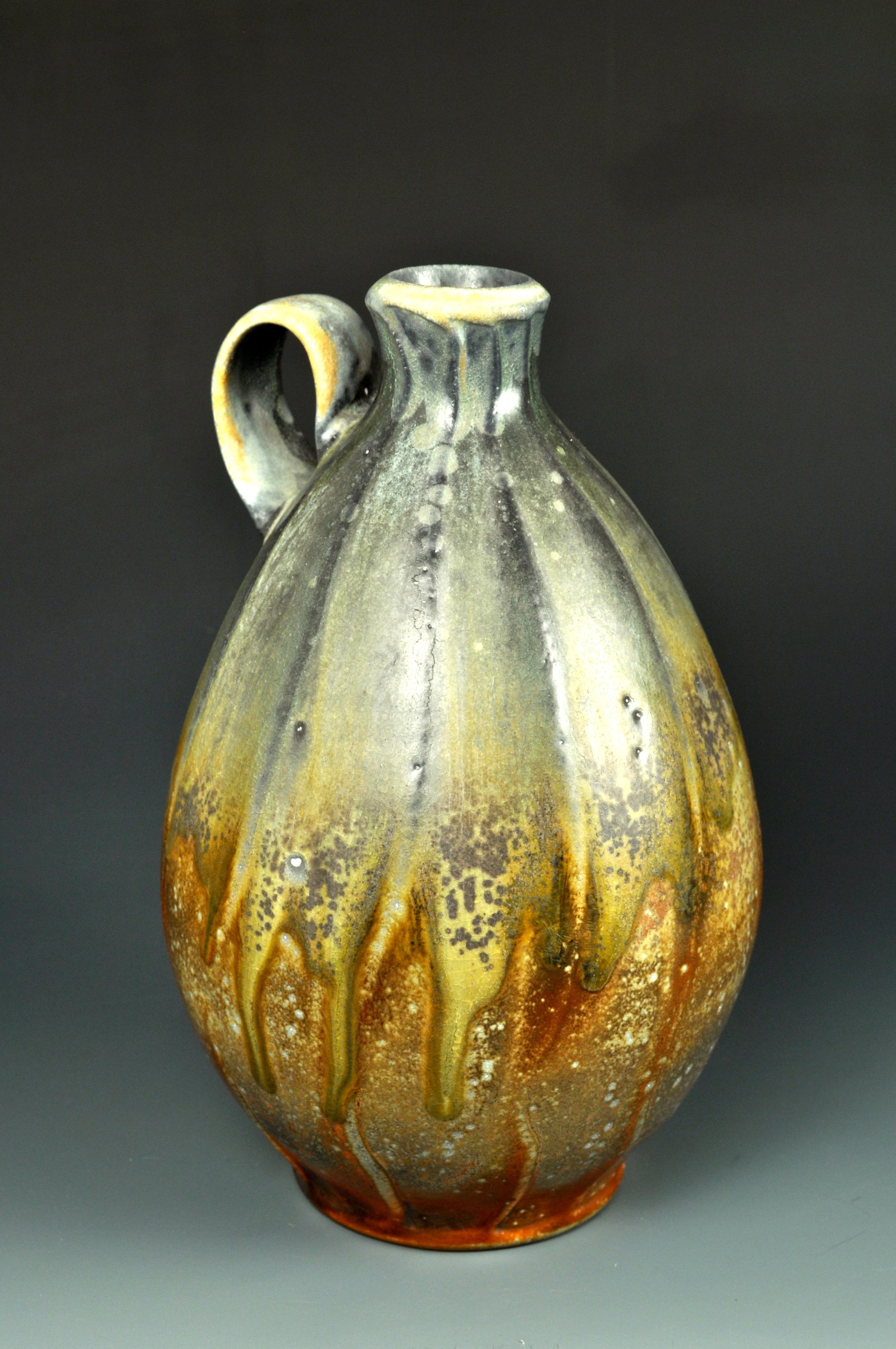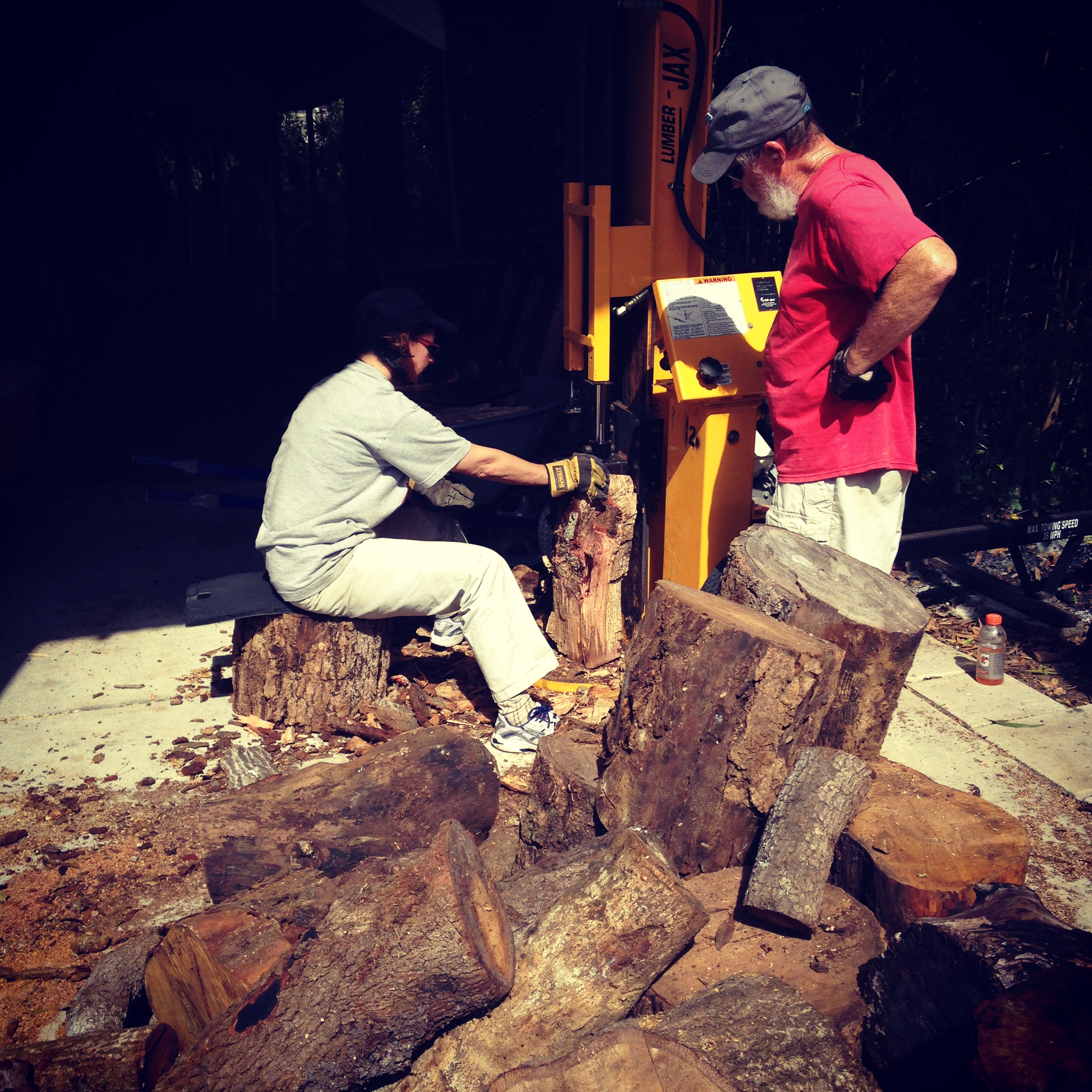Making
I've spent the majority of my life in and around water enjoying the natural wonder of our world, swimming, surfing, fishing, boating, snorkeling, rafting, star gazing, hiking, biking, snowboarding, etc. These activities provide a certain feeling that subconsciously has influenced my work. I do not try to recreate work directly representing these influences, yet the feeling is prevalent in my work. Slip lines represent swell lines, curvaceous forms feel similar to coves and points, loading strategies remind me of looking through my telescope, and surface effects resembling earth and water in various stages of tranquility and turmoil.
Some of my fondest memories growing up are of friends and family gathering around a meal. Both my mother and grandmother had beautiful "china cabinets" filled with fine porcelain pottery only used for special occasions. I recall the sound of dishes rattling when myself, siblings, or friends would accidentally "bump" the cabinets while playing. A moment of stillness followed as I listened to make sure nothing had broken. I use functional pottery as a means to encourage these important moments to occur, taking the "preciousness" of porcelain from the occasional to everyday. My clay bodies start with porcelain, and I then blend in various other clays to help encourage the color and ash glaze achieved through the wood firing process.
Wood Firing
Wood firing in an Anagama style kiln poses many challenges, and opportunities. It's extremely labor intensive, requiring constant stoking every 5-10 minutes for a duration of 3-6 days minimum. My kiln utilizes 3 cords of wood each firing (we fire 5 times per year). I love firing with wood for many reasons. There is no other way to achieve the color, drama, individuality, and connection from maker to user. No two pieces will ever be the same, and there is no "applied" glaze separating the user from the bare clay.
Wood selection is crucial in achieving my results, and fortunately I have several different trees to select from. I work with local landscape companies that have to remove various trees for all sorts of reasons. Some are invasive species the state requires to be eradicated, developers placing trees that overgrow their initial location, hurricane preparation, etc. The wood is delivered to my home, cut into logs 2-3 ft long, cleared of branches, and best of all absolutely FREE! They have to pay to dump the wood at the county facility, so it's a win win on both sides. I cure the wood until it starts to "check", then split and stack the wood under cover in preparation for a firing. I often use "green" wood, as it provides a dynamic color range. I burn specific wood at certain times during a firing to promote melt and flow, speckling, and desired color blend interaction.
Kiln Design
I chose to build a teardrop shaped anagama with a tight taper to help encourage even temperature front to back, abundant ash accumulation, and dramatic flame patterns. The shape of the kiln has much to do with these qualities, although a precise firing schedule is absolutely imperative to achieve repeatable success. There are so many variables in wood firing, it's impossible to attribute any one effect to any single variable. For example, my color palette is not a result of the "clay body", it's a harmonious blend of wood type, clay body, atmosphere, firing duration, stoke frequency, humidity, wind, temperature, stoking style, etc.
My kiln is unique in that it does not smoke. The days of wood kilns belching thick, black smoke are in the past due to the post combustion chamber that I added behind the anagama (before the chimney), which eliminates all of the smoke exiting the chimney. This chamber is half stackable space we use for soda glaze, and half an empty chamber of flue walls. These walls bounce the flame and gasses around before they exit the chimney, resulting in a perfectly clean burning kiln regardless of how heavy it is stoked, or how much reduction is desired. There are additional air intake ports that can be opened if we are burning a smokey wood such as pine. I think this "technology" is of great value across the world for those who want a wood burning kiln, but don't want thick black smoke bellowing out of the chimney.
Cleanup
This is perhaps the most important stage in my process. Unfortunately, wood firing can be very hard on some pots requiring lots of cleaning after they are unloaded. Approximately 10-20% of the work is lost due to cracking, warping, stuck wadding, or general undesirable results.
The 80-90% of the work that remains needs various degrees of grinding, sanding, washing, and finally 3 very light applications of mineral oil to bring my pots into high quality, marketable condition.
I then spend time photographing the work for documentation, and adding pots to the "Shop" section for sale.
Finally, about half of the pots are packaged carefully, and shipped across the globe to collectors, gallery's, invitational and juried shows. The other half of the work from each firing is sold directly from my home gallery, to clients who have arranged a pre-order, during workshops, or in the "Shop" section of this website. This is perhaps the most demanding, and time consuming step, yet also very important. I carefully select pots I want to share with the world, and discard ones that don't meet the highest level of what I am capable of. I only send out the very best work I can make, and hope it brings the user to the table to enjoy a special meal with loved ones. If you would like to acquire my pottery, please visit the "Shop" section of the site, check the "Events" page to see what shows I am participating in, or contact me directly (I always have pots available in my home gallery).









































































